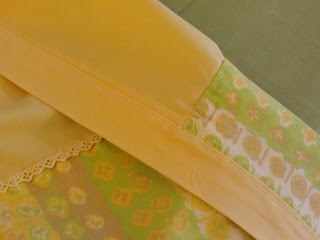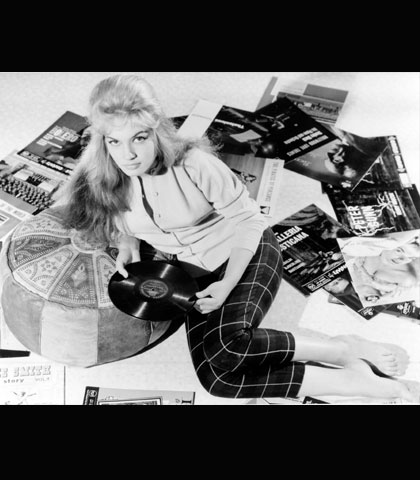All your
pieces are cut so now it's time to sew!
Sew your pocket pieces (with the openings) to the pocket openings on your
skirt FRONT pieces. Then sew the plackets on to the other side. Remember, 1/2" seam allowances and RIGHT sides of the fabric together while you're sewing. If you're using piping, sew that in as well. I just make sure my piping has a 1/2" s.a., sandwich it between my two fabric pieces and sew all at once (with a zipper foot). But here is an in-depth
tutorial from
The Colletterie should you like some more information.
Trim your allowances and clip into the curve of the pocket (so everything will lay nice and flat).
Press your pocket to the inside. Lay the remaining (solid rectangle, no pocket openings) pocket piece on top of the piece that has been sewn onto your skirt FRONT piece. Make sure that the RIGHT side of the solid piece is facing the WRONG side of the piece with the pocket opening. Sew these two pieces together on the two sides opposite the pocket opening. Finish the raw edges however you like and baste the top and side of the pockets to the top and side of the skirt FRONT.
Now you can sew your two
skirt FRONT pieces to your
skirt BACK piece to make one long ass rectangle. (Rectangles!) I usually like to do a french seam to join these three pieces. A french seam is basically a seam enveloped inside itself. It's easy to do on straight seams, looks fantastic and finished, and is super durable.
Here Tilly (of
Tilly and the Buttons) shows you step-by-step how to do a french seam. (Just remember we have 1/2" seam allowances so adjust accordingly. )
On either end of your long ass rectangle you have plackets with raw edges just waiting be to finished. Fold over that raw edge 1/2" and press:
Now fold the placket in half so that the edge you just pressed is covering the stitching you can see from where the placket it attached to the long ass rectangle. Press:
Fold the placket back open and measure out a piece of stitch witchery long enough to fit into the placket. Lay it down, fold the placket back over, and press firmly using steam:
Now you can sew on the RIGHT side of the fabric alongside the piping. This will catch the raw edge of the placket that we pressed under earlier:
Take your waistband and fold it in half lengthwise, press. Fold one raw edge 1/2" and press:
Fold the waistband in half lengthwise with the RIGHT sides together. Make sure that the edge you pressed earlier is about 1/2" above the raw edge. Sew these narrow ends together, trim, and clip the top at an angle, making sure not to clip into your stitching:
Turn your waistband right side out and use a knitting needle to make the points nice and pointy. Press:
Hand or machine baste your long as rectangle. Here is a
tutorial on ruffles that is applicable to gathering your skirt. Pull your basting stitches until your skirt is roughly the length of your waistband:
Pin the raw edge of the waistband to the skirt (right sides together) making sure to keep the pressed edge out of the way:
Sew, press and flip your waistband over. See how nicely the raw edge of the skirt just slips right into the finished waistband? Nice. (Also, you can use your piping here as well. That was the plan with this skirt but I totally forgot. Oops!)
Press the waistband nice and flat, making sure that the pressed edge covers the stitching from where you attached the skirt to the waistband. (P.s. I added a lining since this fabric was really thin.) You will also want to make use of your stitch witchery again since we're not using any interfacing. Just measure out a piece as long as your waistband and slip it up to the very top (where it folds). You may need to use more than one piece depending on how wide your waistband is. Measure two more small pieces to go into the narrow ends on each side. (This makes the waistband stiffer and also gives you some reinforcement in the areas where the buttons and buttonholes will be.) Steam press firmly:
You can slipstitch (here's a
how-to by Tasia of
Sewaholic) the waistband or topstitch on the outside edge, catching the inside edge like this:





































